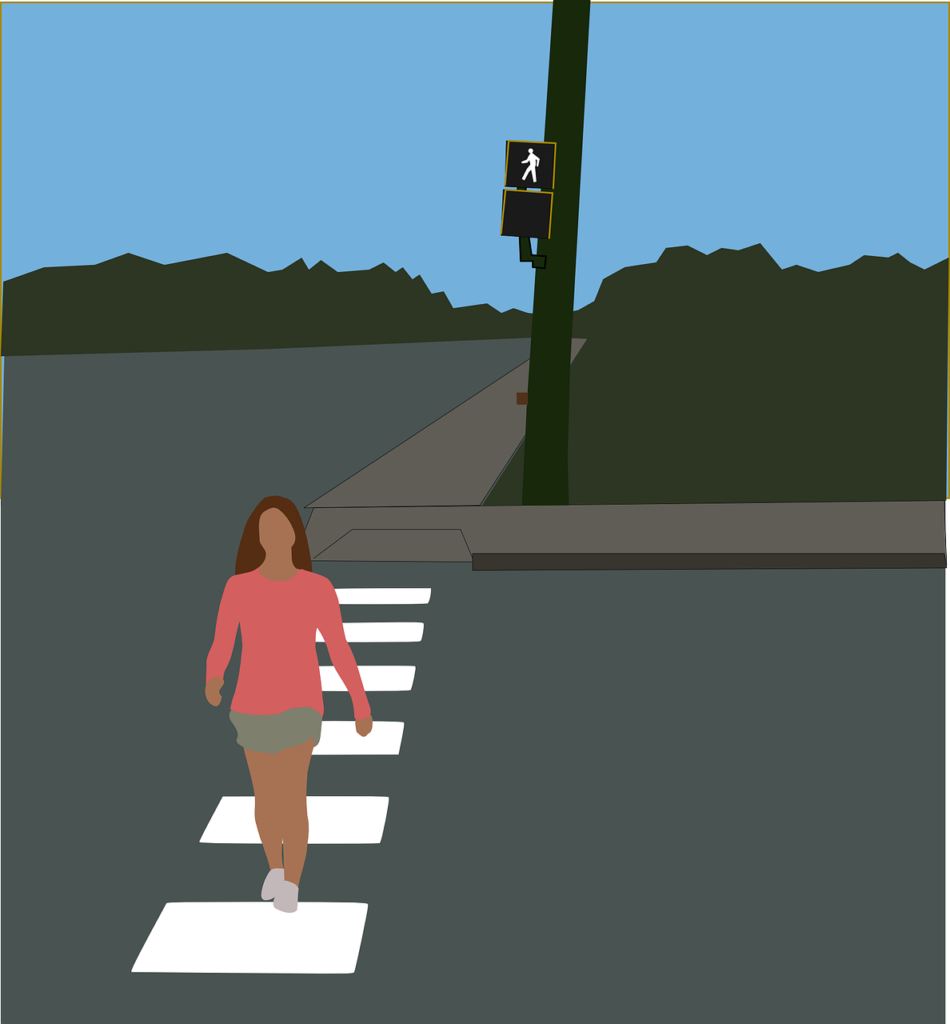
By David Montgomery, Stateline
HOUSTON — On a recent sunlit day, Aboobiada Ali Abdalla stood at the intersection of Tarnef and DeMoss drives in southwest Houston, once again revisiting the tragedy nearly five years ago that forever changed the lives of his family.
In August 2016, his 4-year-old son, Mohammed, was killed when he was struck in the crosswalk by a black GMC Acadia as the boy and his mother were walking an older brother and sister to school. Today, a marker at the base of a nearby loblolly pine bears the inscription: “In Memory of Mohammed Ali Abdalla 2011-2016.”
The family still lives just a block from the site of the crash in Houston’s diverse Gulfton neighborhood. Time has helped them heal, but Abdalla and his wife, Wigdan Ahmed Mohammed, both warn that Gulfton’s streets are still danger zones for anyone on foot, despite the city’s commitment to making improvements following the death of their son.
“I believe there’s still a long way to go,” Wigdan Ahmed Mohammed said in a recent phone interview. Added the father: “It’s still unsafe.”
Often described as “the Ellis Island of Houston,” Gulfton is the most densely populated neighborhood in the nation’s fourth-largest city. Predominantly Hispanic, the low- to middle-income community also is one of the city’s most ethnically diverse, heavily comprised of immigrants who collectively speak at least 50 languages. Many of its roughly 50,000 residents live in aging apartment complexes built in the 1970s for prospering energy workers who moved out decades ago when Houston’s oil economy suffered a collapse.
With miles of broken or missing sidewalks, inadequate outdoor lighting, distracted drivers and wide streets that facilitate speeding, Gulfton could also be Exhibit A in what has become an alarming nationwide increase in pedestrian fatalities in recent years, disproportionately concentrated in the neighborhoods of people of color with low incomes.
Tales of narrowly being missed by a car or SUV are a routine part of neighborhood conversations, say residents. From 2016 to 2020, five pedestrians were struck and killed on the streets of Gulfton, including Mohammed Ali Abdalla, and 22 were seriously injured, according to data from the Texas Department of Transportation (TxDOT).STATELINE STORY May 27, 2021Infrastructure Overhaul Should Focus More on Safety, Advocates Say
In all, 104 pedestrians were struck by vehicles during the five-year period in that community, nearly all people of color, according to LINK Houston, a transportation advocacy nonprofit that analyzed the TxDOT data for Stateline.
“It blew me away that 6% of our streets accounts for 60% of our fatalities,” Houston Mayor Sylvester Turner told Stateline. “Just think about that. Six percent of our streets accounts for 60% of our fatalities. And many of those streets are in communities where … your vulnerable communities are, communities that have been underserved and under-resourced for decades.”
A new Texas law aims to combat the problem, and cities in the Lone Star State and nationwide are embracing an anti-crash strategy dubbed Vision Zero. Turner also says it’s time to turn the page on the car-is-king culture.
“Just building a roadway capacity to carry more cars and trucks, that’s the old paradigm,” Turner said in a phone interview. Now, he said, Houston officials want to design a city where roads and streets “kind of fade” into a broader landscape emphasizing parks and green space—what the mayor describes as a “walkable, livable city.”
Nationwide, the number of pedestrians killed by drivers from 2010 to 2019 increased by 45% to 6,237 a year, the equivalent of at least 17 people dying per day, according to Smart Growth America, a nonprofit coalition of advocacy groups headquartered in Washington, D.C.
Of the 53,435 fatalities that occurred during the decade-long period, Black pedestrians were struck and killed at an 82% higher rate than non-Hispanic White people, according to the group’s March “Dangerous by Design 2021” report. The fatality rate in the nation’s lowest-income neighborhoods was nearly twice that of middle-income census tracts and nearly three times that of higher-income areas, the survey found.
“The lower a metro area’s median household income, the more dangerous its streets are likely to be for people walking,” the report stated. “This is unsurprising, given that low-income communities are less likely than higher-income communities to have sidewalks, marked crosswalks, and street design to support safer, slower speeds.”
Factors that may be contributing to the decade-long climb in pedestrian fatalities include cell phones distracting both drivers and pedestrians, especially through texting, and a shift in vehicle preference from cars to heavier light trucks and SUVs, which have the capability of inflicting more serious injuries, according to the Governors Highway Safety Association.
But pedestrians sometimes don’t adhere to designated crosswalks, often resorting to jaywalking by crossing in the middle of the street rather than at an intersection. Experts say that many pedestrians also often try to beat oncoming cars or fail to yield to vehicles. Others simply aren’t paying attention to traffic.
Vision Zero
All of Texas’ major metropolitan areas are confronting an upturn in pedestrian crashes and are attempting to reverse the pattern by adopting Vision Zero, aimed at ultimately ending road crashes. Vision Zero started in Sweden 22 years ago, registered success in New York City and since has been adopted in 45 U.S. cities, said Leah Shahum, executive director of the Vision Zero Network.
The Vision Zero cities are united by their mutual goals to eliminate traffic fatalities and serious injuries, but their approaches and priorities vary. In launching the first U.S. Vision Zero program in 2014, New York City created a task force encompassing 11 city departments to examine and combat all aspects of rising pedestrian crashes. One of the successes included a 30% decrease in traffic fatalities during the late afternoon and evening from late October through December 2016, compared with the same time period over the previous three years.
Portland, Oregon, significantly restrained speeders by dropping residential speed limits from 25 to 20 mph and installing speed-feedback cameras that tell motorists how fast they’re driving. Los Angeles has boosted Vision Zero funding to its highest level to date, but experts are still worried about persistent speeding and a disproportionate number of pedestrian deaths in predominantly Black and Latino neighborhoods, according to press reports.STATELINE STORY April 20, 2020Speeders Take Over Empty Roads — With Fatal Consequences
Texas lawmakers also are trying to address the problem. GOP Gov. Greg Abbott on June 18 signed a law imposing potential criminal penalties against motorists who injure someone in a crosswalk. The bipartisan bill stemmed from the death of woman who was struck and killed in a crosswalk in Missouri City, a Houston suburb.
State Rep. Ron Reynolds, a Missouri City Democrat who worked with the family and sponsored the bill in the House, compared the new statute to decades-old state laws fining people for not wearing seatbelts, saying the threat of criminal sanctions serves as a powerful deterrent to enforce good behavior in an automobile. The law also featured an amendment requiring motorists to come to a complete stop in yielding to pedestrians in the crosswalk.
“It’s going to help potentially save some lives,” Reynolds said. “I think it’s going to send a real message, ‘Hey, I’d better slow down.’”
Texas Trends
Statewide, the overall number of pedestrian crashes in Texas dropped from 5,975 in 2019 to 4,844 last year, but the number of fatalities rose from 661 to 717, according to TxDOT’s website.
At least 60% of those killed during both years were people of color, according to LINK Houston.
The state’s largest cities all show similar trends.
In San Antonio, the most severe pedestrian crashes from 2014-2018 took place along only 1% of the city’s roadways, said Greg Leininger, San Antonio’s Vision Zero director. The city recorded 4,487 pedestrian crashes in that period, according to a public works department study.STATELINE UPDATE April 29, 2021Congressional Democrats Announce Distracted Driving Bill STATELINE UPDATE March 26, 2021Pedestrian Fatalities Spike During Pandemic
Former council member Shirley Gonzales, who led efforts to create a Vision Zero program in San Antonio, recalls repeatedly being approached by fellow west-side residents with horror stories about pedestrian crashes even before being elected. She stepped down from the council in June after serving eight years in the term-limited post.
“We knew it was mostly people of color being killed on the streets and if we wanted to address this issue, we needed to address some inequities in our city,” she said. “When I was block-walking my community and shortly after as a newly elected council member, I would be approached by people who said a family member had been killed crossing the street. Or a lady told me about her mother being killed while walking to church in the morning.”
In Austin, the north-south artery of Interstate 35 claimed another victim as recently as June 20, when a 76-year-old man was struck along the frontage road sometime overnight. His body was discovered that morning by a security guard at a nearby construction site, and debris led police to conclude that the hit-and-run vehicle was a 2019-2021 silver Toyota Corolla that sustained extensive front end damage.
Just two weeks earlier, the interstate was shut down for about three hours after a person was struck by an 18-wheeler, possibly while trying to cross the freeway sometime after midnight. This time, the motorist stayed at the scene.
The data reveals a pattern of racial disparities among people killed trying to cross Interstate 35, according to a report released in May by Austin’s Vision Zero. Although Black people comprise less than 8% of the Austin population, they accounted for 20% of the pedestrians killed on the interstate in the past five years, according to the report.
Another study of a 12-county metropolitan region anchored by Dallas-Fort Worth reported that the number of pedestrian fatalities climbed from 95 in 2014 to 146 in 2018, an overall increase of 54%. Pedestrians accounted for 1 in 5 of all traffic fatalities in the nation’s fourth most populous region. Nearly a quarter of those crashes were hit and run.
In Dallas County, Black residents accounted for 33% of the pedestrian fatalities though they comprise only 23% of the county’s population. Next door in Tarrant County, anchored by Fort Worth, Black residents, who comprise more than 16% of the population, accounted for 30% of the pedestrian deaths.
The survey, conducted by the North Central Texas Council of Governments, also cited contributing factors behind the rising numbers of pedestrian crashes, both in Texas and nationwide. Among the findings: Pedestrian fatalities occur mostly in urban areas, at night in dark lighting conditions, and often at non-intersection locations, suggesting that jaywalking continues to be a pervasive problem.
Seeking Solutions
The recently signed Texas law was named after Lisa Torry Smith, who was killed by an SUV in a crosswalk in Missouri City while walking her son to school. The law was pushed by her sister, Gina Torry of Minneapolis, Minnesota.
“In honoring my sister’s life and death, I have made it a point to ensure to the best of our ability that this doesn’t happen again,” Gina Torry said after an exhaustive personal lobbying effort to pass the bill. “And if it does, there are consequences.”
Other advocacy efforts have been less successful. Kathy Sokolic of Austin became chair of the Central Texas Families For Safe Streets after her then-9-year-old nephew was left permanently injured when struck by a pickup in 2016 after being dropped off across the street from his home.
She worked with state Rep. Celia Israel, an Austin Democrat, on a bill to reduce speed limits in residential areas, but the bill died after failing to get considered in advance of a critical deadline.
Sokolic said the bill’s demise left her angry and disappointed, but she has no intention of stopping her fight. “I couldn’t fix my nephew, so I figured I could fix the law,” she said.
Stateline, an initiative of The Pew Charitable Trusts.


